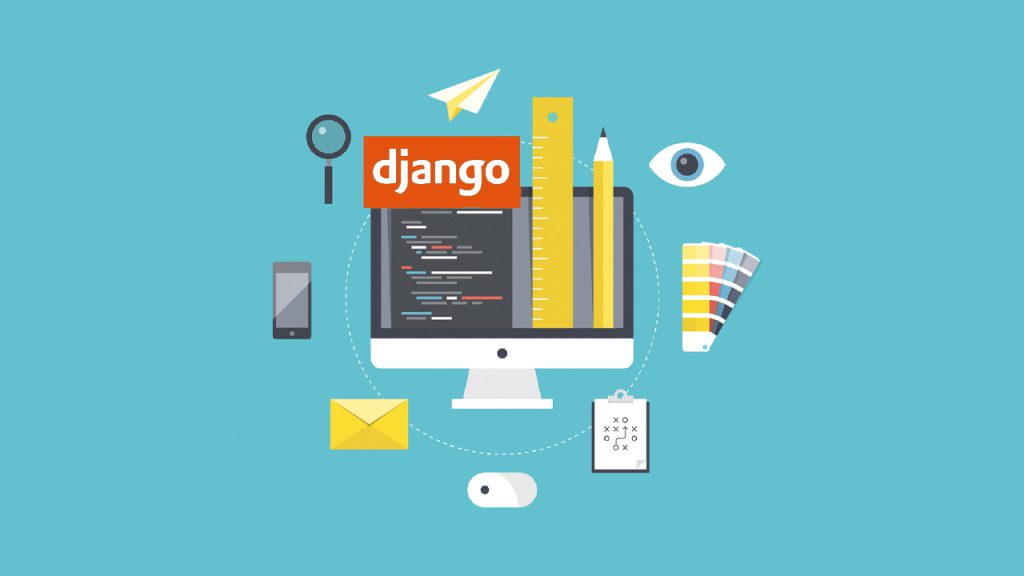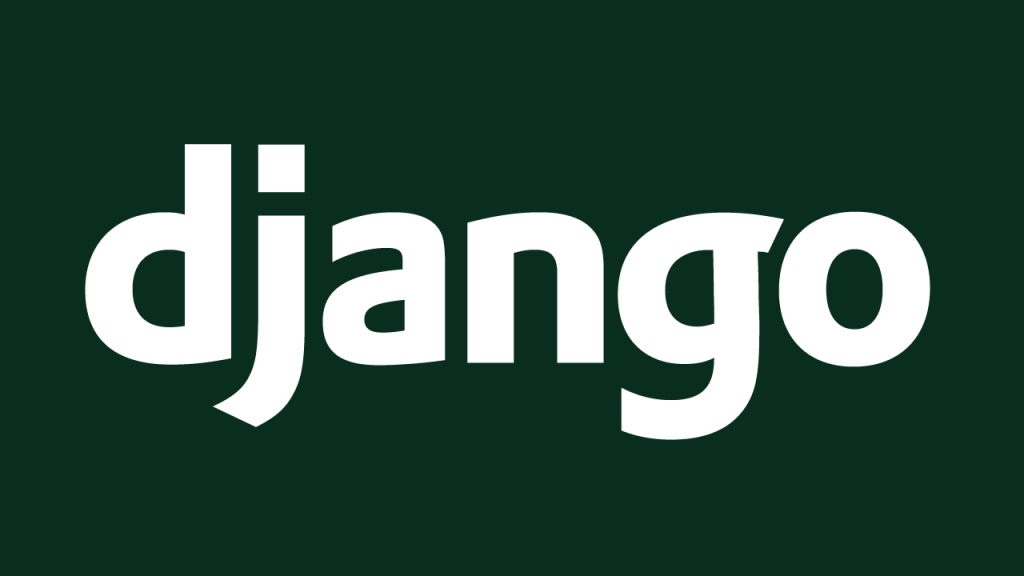If you’re planning to build a website using Python, it’s time to consider a framework. Choosing a framework for web development is very important. There are many frameworks, each designed to meet different project needs. For many companies and independent projects, the Django framework, one of the most popular web development tools, can be a hassle-free choice. but why? Let’s answer some questions. What is Django? And why so many developers around the world use it.
What is a framework?
A framework is nothing but a set of modules that make development easier. Frameworks allow you to build apps and websites from scratch using an off-the-shelf resource.
This is how websites, even simple websites designed by one person, can still have advanced functions such as authentication support, admin and management panels, contact forms, comment sections, file upload support, etc. In other words, if you wanted to design a website from scratch, you would have to develop all these components yourself. But with a framework, all you have to do is utilize these built-in components and configure them properly to match your site.
What is Django?
Django is a free, open-source, high-level Python framework that enables rapid development and clean, functional design for web applications. Built by experienced developers, this framework takes most of the pain out of web development, so you can focus on writing your app without having to code everything from scratch.

Django in the past and present
The Django framework was designed by Adrian Holovaty and Simon Willison, developers at the Lawrence Journal-World newspaper in Kansas. At the time, Adrian and Simon were coding in PHP. However their website needed a quick update, and deadlines were challenging to meet. Adrian and Simon needed something they could quickly build a website with. That’s when they decided to use Python.
They later started working on Django to make coding more straightforward and efficient. In 2005, Django was publicly released as an open-source project. Once the Django community was formed, development began, and the number of websites using Django grew rapidly. Some of the best apps built with Django include Instagram, YouTube, Pinterest, Dropbox, and Spotify. Today, the Django community unites more than 11,000 developers from 166 countries.
Why is Django suitable for web development?
Among Python frameworks, Django is often considered the best framework for developing web applications. It was even listed among the most popular frameworks in the 2018 Stack Overflow developer poll.
Django follows the principle of “Don’t Repeat Yourself,” and this framework makes Django efficient in terms of time efficiency. In other words, there is no need to rewrite existing codes; Because Django allows you to put your website together like pieces of a Lego set. This framework is suitable for systems with high data volume and can reduce development time thanks to many auxiliary tools.
According to the Django Software Foundation, Django was “built to meet the tight deadlines of news agencies while meeting the demanding requirements of experienced developers.” Today, Django is known for the slogan “The web framework for perfectionists with deadlines.”
Thanks to the simple syntax and code readability, programs written with Django are clean and well-structured. This helps developers turn their ideas into reality and meet requirements faster.
What is Django used for?
The Django framework owes its name to jazz guitarist Django Reinhardt, who, despite having two fingers paralyzed after an accident, could play stunning pieces with his guitar. The Django framework can also perform multiple tasks. Django can be used for:
- Customer Relationship Management (CRM) systems
- Content Management Systems (CMS) for internal and commercial use
- Communication platforms
- Reserve engines
- Document management platforms
Django can also be great for:
- Identity verification systems
- Filtering systems with dynamic variable rules and advanced parameters
- Solutions for data analysis and complex calculations
- machine learning
Django is an excellent choice for web development. Stay with us to continue answering the question, “What is Django?” Let’s explain more about the benefits of using it.
Advantages of the Django framework
Now that we know what Django is and its applications let’s discuss its advantages.
Strong community
A large community has formed around Django, and more and more enthusiasts are joining it daily. They are constantly updating and improving the framework components while developing new libraries to solve the problems professionals often face when developing web applications. In addition, when you have a problem using Django, you can find your answer in the powerful Django community.
Default admin panel
Admin panels are designed to help you manage your apps. A Django admin panel is automatically generated from Python code while creating an admin panel manually is time-consuming and pointless.
Thanks to third-party apps, there’s plenty of room for customization in Django’s admin panel. In addition, Django allows you to modify the user interface using third-party packages and add unique dashboards for your needs.
Suitable for SEO
Django also offers a number of search engine optimization (SEO) tools. With the Django SEO framework, developers can reduce page load times by using cached templates and CSS and JavaScript compression. There is even a tool for managing robots.txt. All in all, Django’s CMS capabilities exceed the expectations of many SEO professionals.
libraries
Django allows developers to use libraries when building any project. Some popular libraries include the Django REST framework, which is responsible for building application programming interfaces (APIs), Django CMS, which is designed to manage website content; and Django-allauth, which is an integrated set of Django applications for authentication, registration, account management, and third-party user account authentication.
ORM
Object-relational mapping (ORM) in Django is compatible with several popular databases, but its main feature is that it allows developers to work with multiple databases simultaneously. In addition, Django allows you to migrate from one database to another and perform common operations without the need to write additional code.
Batteries included
The batteries-included approach in Django means that this framework includes all the features necessary to develop a complete application. Django offers HTML formatting, URL routing, object-relationship mapping (ORM), and session management, which helps developers avoid the tedious search for third-party tools. Django packages help you quickly build anything from talking bots to complex GPS-based solutions.
Scalability
Django components are self-contained, meaning they can be added or removed as needed, like Lego pieces. Depending on the requirements of each product, the scale of development can be increased or decreased, and, if necessary, the number and complexity of Django components can be changed.
high security
Django protects applications by default. It mitigates some of the common security mistakes associated with Python and also protects applications against cross-site scripting attacks, requests forgery, and SQL injection.
Who uses Django?
Many sites and applications are built on Django. According to SimilarTech, as of May 2021, 83,359 websites have been built with Django. Let’s take a closer look at the best and most popular programs built with Django.

Django has been used to build Instagram since 2010 when Instagram started. Django helped Instagram founders Mike Krieger, and Kevin Systrom develop the first version of the app in about two weeks. According to Mike Krieger, getting started with Django was easy; Because it didn’t require a lot of decisions or adjustments, it made it easy to experiment. Instagram grew rapidly, and the company began looking for new technologies to power its system. They considered various options but ultimately decided that it was Python and Django that could handle the scale of their work.
Dropbox
Dropbox is another great example of Django. Dropbox has used Python as its core technology since the beginning. They have used several versions of Python so far and are currently using a custom version of Python 3.5. Using Django, Dropbox stores and shares files, syncs user accounts across multiple devices, and provides file history.
Spotify
Spotify contains a large amount of data and enables users to listen to music on any device. To do this, Spotify uses Python alongside Django.
Washington Post
Built from the ground up to meet the tight deadlines of news agencies, Django remains popular among news apps. One of the biggest examples of this type of Django application is the Washington Post web application, one of the most influential newspapers in the world. The Washington Post uses the Django Framework to manage large volumes of data and provide fast and efficient performance.
Mozilla
Mozilla Firefox was not originally built with Python, but PHP and CakePHP were technologies used by Mozilla. But as it grew, as they had to deal with millions of searches daily, there was an urgent need to adopt new technologies to handle high traffic and improve efficiency. This is where Python and Django come in. Firefox browser extensions and the Mozilla support site are now built with Django.
Django is popular among social networking platforms because it handles massive amounts of data and can handle thousands of user interactions per second. With 250 million active users, Pinterest must perform well and provide high scalability while maintaining quality performance. Pinterest handles this using Django, allowing users to follow each other and share boards and pins.
National Geographic
Another excellent example of using Django is National Geographic, an organization committed to exploring and protecting our world. They use Django to build a custom CMS to manage their website content, from images to ads to modules.
NASA
Since security is one of Django’s most powerful capabilities, the framework plays a big role in healthcare and government applications. NASA, the US National Aeronautics and Space Administration, uses the Django framework to deliver its site to its 2 million visitors per month.
Comparison of Django with other frameworks
In the rest of this article, we will examine the speed of Django and discuss whether Django is fast enough. Pay attention to the following benchmark. In this test, one server is built for each framework. Then a simple JSON file is sent to each server, and finally, the number of requests processed by the server per second is written.

As you can see, Django is one of the slowest frameworks in all tests, but this measurement model is not very suitable; Because, firstly, this project is not so close to real-world projects, and we rarely want to send a static file to all users or for example in ExpressJS there are only three simple layers of middleware, but in Django, there is a large set of middleware that They do different things on request. (Middlewares perform certain functions along the path on the request.)
What is Performance?
When someone tells you that a framework is too slow, you should ask them in what areas it is slow and why it matter. In general, there are two goals for optimizing websites: firstly, the user has a better experience of working with the site, and secondly, the costs of the server and maintenance of the site are reduced. Let’s go to the first one. When the user works with the site, two things are essential:
- Response time means the time the user waits for the page to load.
- Concurrency means how many users can use the site at the same time.
Response time in Django

Users don’t like to wait for the page to load, So the faster the page loads, the more satisfied users are with the performance of your site. But the relationship between page loading time and user satisfaction is not a linear relationship; For example, if your website page used to load in 5 seconds and now you’ve made it load in 1 second, this improvement on your site will make the user happy.
Even if a page that used to load in 500ms now loads in 100ms, this improvement will still make users more satisfied. But if you drop the loading speed from 50ms to 10ms, no one will probably notice the change. So when they say this framework is five times faster than that framework, it doesn’t necessarily mean that it is going to provide a much better user experience for users. But by doing some things, you can reduce the response time in projects. for example:
Reducing the number of queries
Whenever you want to access the database and get information from it, it takes some time. Especially if you want to filter and make complex queries, it will take a lot of time, and your site will be slower. So, the more you can make a query, the less response time you will have.
Caching data
If you are going to use data in the future, it is better to cache that data so that it does not need to spend time sending data from the server again. Django allows you to store the data you want in the cache layer without caching the entire page. By doing this, you can save a significant amount of time, which will increase the speed of your site.
DRY law
The rule (Don’t Repeat Yourself or DRY) is essential in programming. Always try not to overwrite existing objects or functions. This repetition and rewriting can slow down your code, ultimately increasing response time.
In the Django document, there are many ways to increase speed and productivity, which you can use to multiply the speed of a Django app. It should be noted that the skill of the programmer and the way he chooses to write the code have a significant effect on the speed of the program.
In general, Django is not a problem in terms of speed for most projects, but if you have a project where even 100 milliseconds matter to you – for example, projects that work with the stock market and trading stocks and cryptocurrencies – it is better to use other frameworks. But if 500ms and 600ms don’t matter that much to you, Django is highly recommended.
Concurrency in Django

As mentioned, concurrency means how many users can use the site simultaneously. One of the main issues in concurrency is communicating with the database and receiving data from it. Here, what can be very effective is the skill of the programmer, the optimal use of data, and reducing the number of requests to the database.
Responsible for handling concurrency in Django is the WSGI (Web Server Gateway Interface) server. There are various WSGIs in Python, including Bjoern, Gunicorn, Meinheld, etc., each of which has specific advantages and high performance.
So, finally, it can be said that concurrency in Django depends more on you and the power of the server you can get, and as you upgrade the RAM and processor cores of your server, Django will accompany you and allow you to increase concurrency.
To find out how much concurrency you’ll get with the server you’ve got, you can use the Locust tool, which simulates users and challenges your site by sending them loads of requests.
Performance from another angle
Performance can be looked at from another angle, and that is your productivity as a developer. The fact that you can finish your project sooner or fix bugs faster and have more time to add new features is also a form of productivity that Django has a lot to say about this.
From extensive documentation to numerous questions answered on Stack Overflow and other sites, as well as the Python language, which is simpler and more understandable than other languages; All this makes you able to develop a Django project very quickly and with high productivity.
Conclusion
Now you can answer the questions: “What is Django, and who uses Django?” Django is a fast, secure, and scalable Python framework that has invested heavily in facilitating the development process for its users. Django is built to help build software as quickly as possible. The “don’t redo it” philosophy that Django is built on allows developers to reuse code they’ve written for other projects, reducing the time needed to develop a product. So if you have little time and a limited budget, or if you often have tight deadlines and value innovation, Django can be a great solution.
Ease of writing and debugging is also an issue that has added to the popularity of this framework. But if you have a project that needs to be very fast and milliseconds are important to you, or you don’t have the necessary server and hardware to run the Django project, you can use other frameworks with higher speed.



